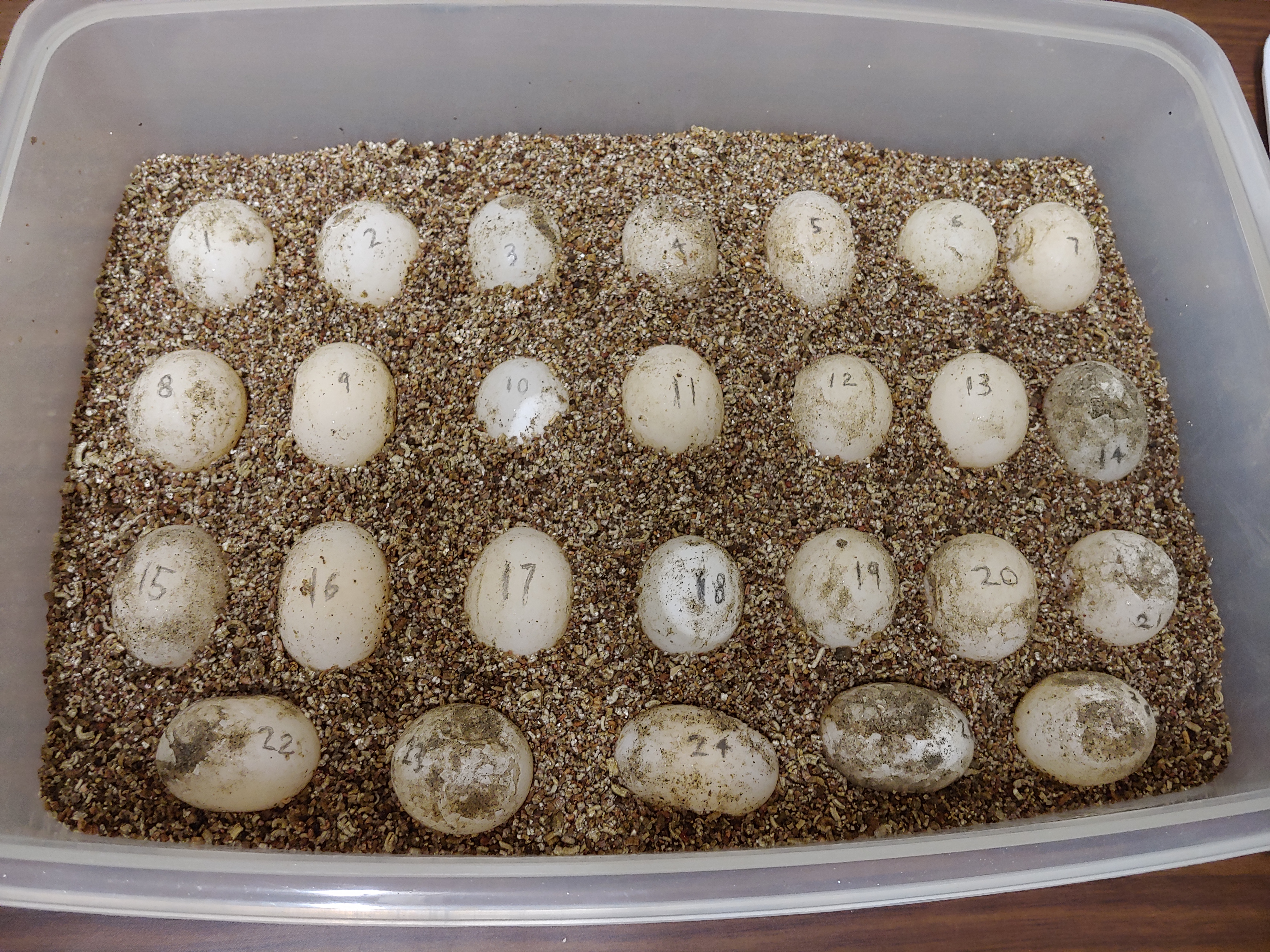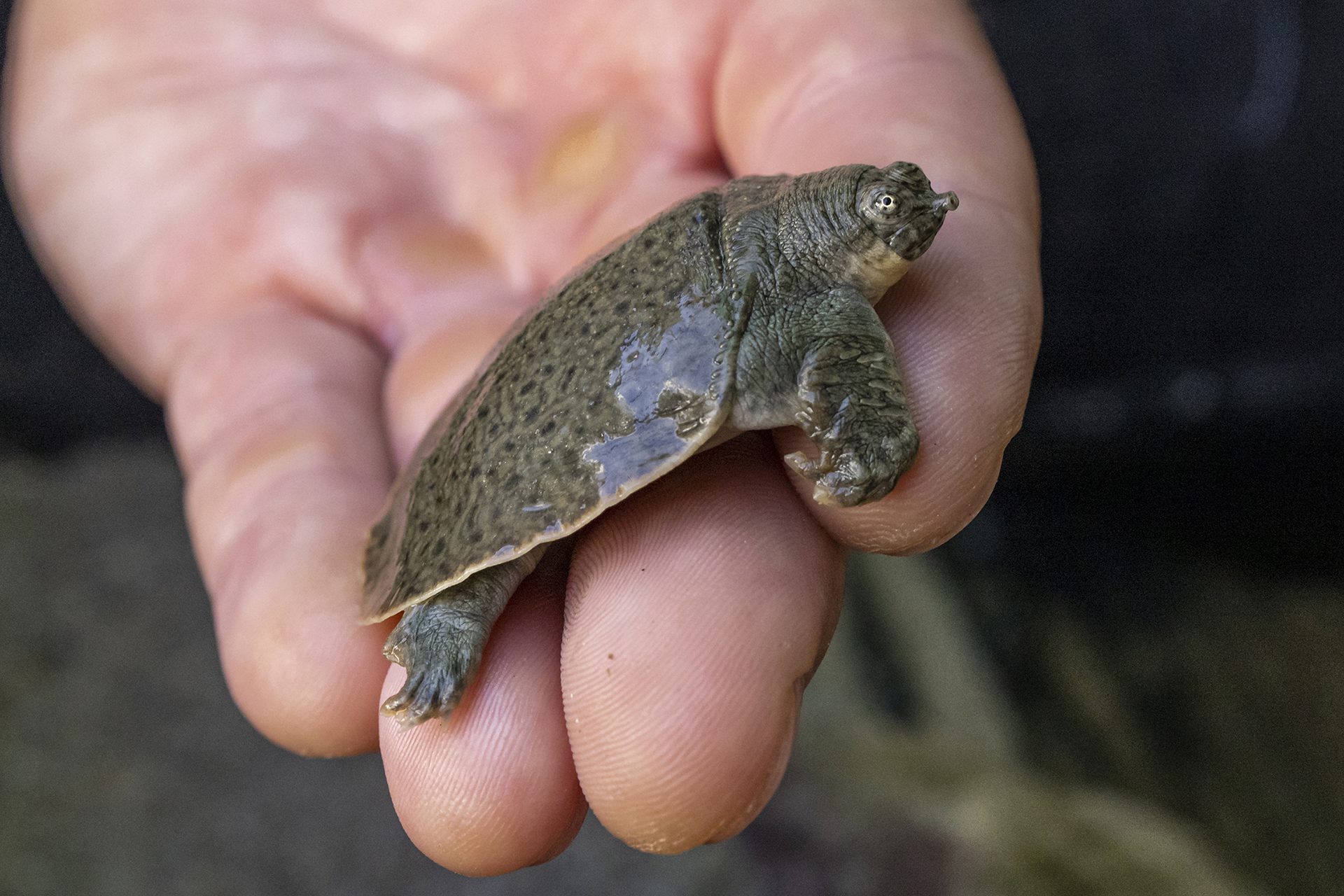Forty-one Indian narrow-headed softshell turtles (Chitra indica) have become the latest arrivals at San Diego Zoo. This makes the zoo the first accredited conservation organization in North America to hatch these endangered turtles.
Three of the rare turtles have been living at the zoo for more than 20 years, and while experts have been monitoring them closely, breeding behavior is especially difficult to observe as eggs are laid overnight and covered in soil. It can also take close to 10 years for the turtles to reach sexual maturity, further impeding the process.
Fortunately, during the summer months, the team found two clutches of eggs within the exhibit. Some of the eggs were left in situ while the majority were brought into an artificial nest incubator so the team could maintain the ideal climate conditions for them to hatch. These conditions can even affect the sex of the offspring.
Twenty-six turtle eggs incubated from the first clutch. Image Credit: San Diego Zoo Wildlife Alliance
“This is a thrilling moment for us at the San Diego Zoo, and an incredible step forward in the conservation of this species. We have been focused on caring for these turtles for a very long time, and part of that care is to gain a greater understanding of the species’ natural history,” said Kim Gray, curator of herpetology and ichthyology at the San Diego Zoo, in a statement.

Indian narrow-headed softshell turtle doesn’t look too pleased to be picked up. Image Credit: San Diego Zoo Wildlife Alliance
While these new hatchlings can fit in the palm of your hand, adults can reach over 110 centimeters (45 inches) in length and weigh over 200 kilograms (440 pounds).
Much about the life history of these turtles is unknown, but in the wild, Indian narrow-headed softshell turtles are found at the bottom of deep rivers in India, Bangladesh, Pakistan, and Nepal – much like the bum-breathing turtle that hangs out at the bottom of Australian rivers.
Indian narrow-headed softshell turtles ambush their prey, which includes fish, crustaceans, and mollusks. They are what is known as an “indicator species” as they help scientists look at the health of the surrounding environment.
Listed as Endangered by the IUCN, the main threats to this species are the international pet trade, human harvesting for food, environmental pollution, and destruction of habitat. The San Diego Zoo Wildlife Alliance works with the Turtle Survival Alliance to educate communities about the interdependence of the health of local rivers and the well-being of local towns and villages.
“These turtles are higher-level predators within their native ranges,” said Gray. “If they are thriving, that means the river habitats where they live are healthy and can support other species. And that includes humans, as some local communities depend on the same water source used by the turtles.”
Source Link: Rare Turtles Hatch At US Zoo After 20 Years, And Boy Was It Worth The Wait